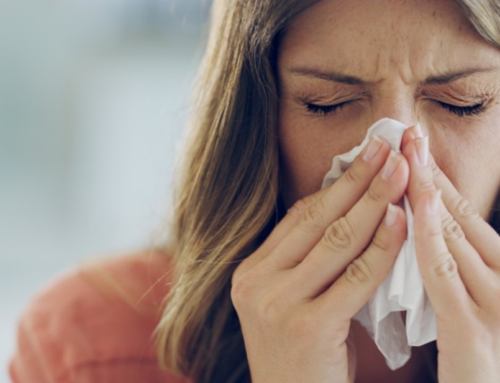Milliyet Newspaper – January 12, 2021
The cold weather can bring some problems in people who are prone to allergies. Cold urticaria, known as cold allergy; occurs with exposure to cold air and the effects can be serious. President of Allergy and Asthma Society and Pediatric Allergy Specialist Prof. Dr. Ahmet Akçay gave information about cold urticaria.
What is cold urticaria?
Cold allergy, cold urticaria, is a skin reaction that occurs a few minutes after exposure to cold. Itching develops in the affected area. People with cold urticaria experience very different symptoms. Some people have minor reactions to cold, while others have severe reactions. For some people with this condition, swimming in cold water can cause very low blood pressure, fainting, or shock. Urticaria is the most common allergic skin disease in children. It is also known as hives or urticaria and sometimes develops due to cold.
Symptoms of cold allergy
Symptoms of cold urticaria begin soon after the skin is exposed to a sudden drop in air temperature or cold water. Humid and windy conditions can increase the likelihood of symptoms exacerbating. The worst reactions usually occur with full skin exposure, such as swimming in cold water. Such a reaction can cause unconsciousness and suffocation. Symptoms of cold urticaria can vary in severity from person to person. Symptoms of a cold allergy can include:
-Temporary reddish, itchy spots (hives) on the skin area exposed to cold
– Worsening of the reaction as the skin warms,
-Swelling of the hands when holding cold objects,
– Swelling of the lips when consuming cold food or drink,
Severe reactions to a cold allergy include:
-whole-body reaction (anaphylaxis), which can cause fainting, heart palpitations, swelling of the limbs or trunk, and shock.
– Swelling of the tongue and throat that can make breathing difficult.
Diagnosis of cold urticaria
When diagnosing cold urticaria, family history and examination findings are taken in the first place. Cold urticaria can be diagnosed by placing an ice cube on the skin for five minutes. If you have cold urticaria, a raised, red bump (hives) will form a few minutes after the ice cube is removed. The ice cube test is a generally conclusive test. In cases where the ice test is not sufficient, some blood tests can be performed in order to find the underlying causes for differential diagnosis. For the diagnosis and treatment of cold allergy, it would be beneficial for children up to the age of 18 to be performed by pediatric allergy specialists, and those over 18 years old by adult allergy specialists.
Harms of cold urticaria
Cold-induced urticaria can be seen in areas of contact with the body or in all areas. Cold urticaria can sometimes have important and critical consequences. Especially swimming in cold water can cause confusion, low blood pressure and loss of consciousness. That’s why it’s important for people with cold urticaria not to swim in cold water. Otherwise, these symptoms occurring in water may cause situations such as drowning.
Ways to avoid cold allergies
– Protect your skin from cold or sudden temperature changes. If you are going to go swimming, first dip your hand in the water and accustom your body to the water. Talk to your allergist before going swimming, and if necessary, take antihistamine medication under the supervision of a doctor.
-Avoid ice-cold drinks and foods to prevent your throat from swelling. The cold can cause swelling and breathing problems after coming into contact with the throat and tongue.
– If your doctor has prescribed an epinephrine auto-injector, keep it with you to avoid serious reactions and pay attention to the expiration date of this medicine.
– If you are going to have surgery, talk to your surgeon ahead of time about your cold urticaria. The surgical team can take steps to help prevent cold-related symptoms in the operating room.






